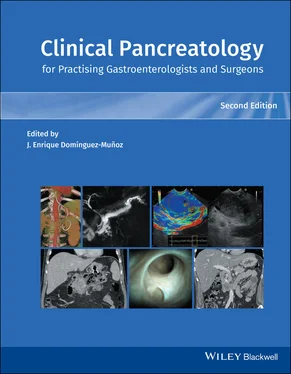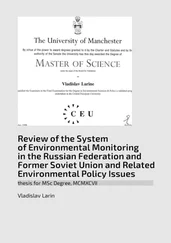Severe Acute Pancreatitis
Severe AP is defined by persistent organ failure (>48 hours). Primary organ failure develops in the early phase of AP when cytokine cascades result in the systemic inflammatory response syndrome (SIRS). Secondary organ failure may develop later in the disease course (more than two weeks) as a result of infected pancreatic necrosis. Approximately 5–15% of AP patients develop a severe disease course, though this proportion may be as high as 40% in tertiary care referral centers [24,25]. Severe AP is associated with high morbidity and mortality (40–50%).
Limitations of the Revised Atlanta Classification
While studies have validated the RAC as being a superior classification system compared to the original AC, limitations exist [1,2,4,6]. Notably, the RAC does not differentiate between several characteristics of organ failure that have been shown to impact outcomes.
First, persistent multisystem organ failure has far greater mortality compared to persistent single‐system organ failure [4,24,26]. Second, a higher grade of persistent organ failure (e.g. modified Marshall grade 3 or 4 requiring respiratory ventilation) is associated with worse outcomes [27]. Additional factors which may influence outcomes, such as timing (early versus late onset) of persistent organ failure, duration of persistent organ failure, and organ system affected (cardiovascular versus renal versus respiratory), require clarification[24,25,27,28].
Several additional factors that impact mortality in AP are not addressed by the RAC. First, compared to subsequent episodes, the initial episode of AP may follow a more severe course and accounts for nearly 100% of the mortality [29]. Second, AP patients requiring hospital transfer have higher rates of multisystem organ failure, need for intensive care, and mortality [30]. Third, mortality in necrotizing pancreatitis affecting only the peripancreatic tissue is lower compared to cases affecting both pancreatic and peripancreatic tissue (8–9% vs. 20%) [23].
The Determinant‐Based Classification
The DBC was created through a consensus of international experts from 49 countries [13]. The DBC uses the local determinant (i.e. infected necrosis) and/or systemic determinant (i.e. organ failure) of mortality to categorize AP into four levels of severity: mild, moderate, severe, and critical (see Table 3.1) [31]. Mild AP is defined as no pancreatic or peripancreatic necrosis and no organ failure. Moderate AP is defined as sterile necrosis and/or transient organ failure. Severe AP is defined as either infected necrosis or persistent organ failure. A fourth category termed “critical AP” is defined by the presence of both persistent organ failure and infected necrosis.
Organ failure is defined by a Sepsis‐related Organ Failure Assessment (SOFA) score of 2 or more, or when the following thresholds are met.
1 Cardiovascular: use of inotropic agent.
2 Renal: creatinine ≥171 μmol/l (≥2.0 mg/dl).
3 Respiratory: PaO 2/FiO 2 ≤300 mmHg (≤40 kPa).
As in the RAC, persistent organ failure is defined as lasting for 48 hours or more. Transient organ failure is defined as lasting less than 48 hours.
The RAC and DBC share many similarities, and multiple independent validation studies have found no significant differences in performance between the two classification systems [1–8].
The primary distinction between the two classification systems is the emphasis the DBC places on infected necrosis as a determinant of outcomes; however, the contribution of infected necrosis to mortality may be limited. While previous studies have shown infected necrosis to be a risk factor for mortality independent of persistent organ failure, these studies were largely performed in an era when patients with infected necrosis underwent early surgical debridement [31]. More recent studies performed after the advent of direct endoscopic necrosectomy have shown that mortality of infected necrosis in the absence of organ failure is much lower (<5%) [3,4,8,24]. Conversely, in the setting of persistent organ failure, neither the presence nor absence of infected necrosis affects the overall high mortality rates [3,8,24]. If these observations are confirmed in future studies, revisions of the DBC should no longer classify infected necrosis in the absence of persistent organ failure as severe AP, nor should the presence of both infected necrosis and persistent organ failure be separated into its own “critical” category.
The clinical severity and complications of AP can be highly variable. Both the RAC and DBC have made major advances on the original AC, adding standardized definitions of local complications and emphasizing the role of persistent organ failure as a determinant of mortality. Both classifications require revisions based on updated information, including the significant difference in mortality among patients with persistent single‐system versus persistent multisystem organ failure.
1 1 Nawaz G, Mounzer C, Yadav I, et al. Revised Atlanta and Determinant‐Based Classification: application in a prospective cohort of acute pancreatitis patients. Am J Gastroenterol 2013; 108:1911–1917.
2 2 Acevedo‐Piedra NG, Moya‐Hoyo N, Rey‐Riveiro M, et al. Validation of the Determinant‐based Classification and Revision of the Atlanta Classification Systems for acute pancreatitis. Clin Gastroenterol Hepatol 2014; 12:311–316.
3 3 Guo Q, Li M, Chen Y, et al. Determinant‐based classification and revision of the Atlanta classification: which one should we choose to categorize acute pancreatitis? Pancreatology 2015; 15:331–336.
4 4 Kadiyala L, Suleiman U, Mcnabb‐Baltar A, et al. The Atlanta Classification, Revised Atlanta Classification, and Determinant‐Based Classification of acute pancreatitis: which is best at stratifying outcomes? Pancreas 2016; 45:510–515.
5 5 Bansal SS, Hodson J, Sutcliffe RS, et al. Performance of the revised Atlanta and determinant‐based classifications for severity in acute pancreatitis. Br J Surg 2016; 103:427–433.
6 6 Choi J‐H, Kim M‐H, Cho DH, et al. Revised Atlanta classification and determinant‐based classification: which one better at stratifying outcomes of patients with acute pancreatitis? Pancreatology 2017; 17:194–200.
7 7 Wu D, Lu B, Xue H‐D, et al. Validation of modified determinant‐based classification of severity for acute pancreatitis in a tertiary teaching hospital. Pancreatology 2019; 19:217–223.
8 8 Sternby H, Bolado F, Canaval‐Zuleta HJ, et al. Determinants of severity in acute pancreatitis: a nation‐wide multicenter prospective cohort study. Ann Surg 2019; 270:348–355.
9 9 Bradley EL. A Clinically based classification system for acute pancreatitis: summary of the International Symposium on Acute Pancreatitis, Atlanta, Ga, September 11 through 13, 1992. Arch Surg 1993; 128:586–590.
10 10 Banks PA, Freeman ML, Practice Parameters Committee of the American College of Gastroenterology. Practice guidelines in acute pancreatitis. Am J Gastroenterol 2006; 101:2379–2400.
11 11 Bollen TL, van Santvoort HC, Besselink MG, et al. The Atlanta Classification of acute pancreatitis revisited. Br J Surg 2008; 95:6–21.
12 12 Banks PA, Bollen TL, Dervenis C, et al. Classification of acute pancreatitis – 2012: revision of the Atlanta classification and definitions by international consensus. Gut 2013; 62:102–111.
13 13 Dellinger EP, Forsmark CE, Layer P, et al. Determinant‐based classification of acute pancreatitis severity: an international multidisciplinary consultation. Ann Surg 2012; 256:875–880.
14 14 Buter A, Imrie CW, Carter CR, et al. Dynamic nature of early organ dysfunction determines outcome in acute pancreatitis. Br J Surg 2002; 89:298–302.
Читать дальше












